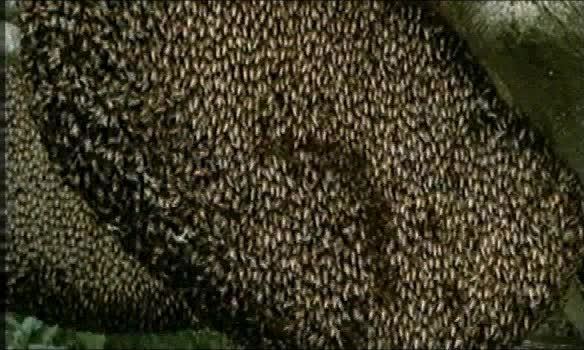 | ||
Biological organisation is the hierarchy of complex biological structures and systems that define life using a reductionistic approach. The traditional hierarchy, as detailed below, extends from atoms to biospheres. The higher levels of this scheme are often referred to as a ecological organisation concept, or as the field, hierarchical ecology.
Contents
Each level in the hierarchy represents an increase in organisational complexity, with each "object" being primarily composed of the previous level's basic unit. The basic principle behind the organisation is the concept of emergence—the properties and functions found at a hierarchical level are not present and irrelevant at the lower levels.
Organisation furthermore is the high degree of order of an organism (in comparison to general objects). This order typically correspond to an interpendence between heterogeneous parts. To an extent, individual organisms of the same species have the same arrangement of the same structures. For example, the typical human has a torso with two legs at the bottom and two arms on the sides and a head on top. It is extremely rare (and usually impossible, due to physiological and biomechanical factors) to find a human that has all of these structures but in a different arrangement.
The biological organisation of life is a fundamental premise for numerous areas of scientific research, particularly in the medical sciences. Without this necessary degree of organisation, it would be much more difficult—and likely impossible—to apply the study of the effects of various physical and chemical phenomena to diseases and physiology (body function). For example, fields such as cognitive and behavioral neuroscience could not exist if the brain was not composed of specific types of cells, and the basic concepts of pharmacology could not exist if it was not known that a change at the cellular level can affect an entire organism. These applications extend into the ecological levels as well. For example, DDT's direct inseciticidal effect occurs at the subcellular level, but affects higher levels up to and including multiple ecosystems. Theoretically, a change in one atom could change the entire biosphere.
Levels
The simple standard biological organisation scheme, from the lowest level to the highest level, is as follows:
More complex schemes incorporate many more levels. For example, a molecule can be viewed as a grouping of elements, and an atom can be further divided into subatomic particles (these levels are outside the scope of biological organisation). Each level can also be broken down into its own hierarchy, and specific types of these biological objects can have their own hierarchical scheme. For example, genomes can be further subdivided into a hierarchy of genes.
Each level in the hierarchy can be described by its lower levels. For example, the organism may be described at any of its component levels, including the atomic, molecular, cellular, histological (tissue), organ and organ system levels. Furthermore, at every level of the hierarchy, new functions necessary for the control of life appear. These new roles are not functions that the lower level components are capable of and are thus referred to as emergent properties.
Every organism is organised, though not necessarily to the same degree. An organism can not be organised at the histological (tissue) level if it is not composed of tissues in the first place.
Fundamentals
Empirically, a large proportion of the (complex) biological systems we observe in nature exhibit hierarchic structure. On theoretical grounds we could expect complex systems to be hierarchies in a world in which complexity had to evolve from simplicity. System hierarchies analysis performed in the 1950s, laid the empirical foundations for a field that would be, from 1980's, hierarchical ecology.
The theoretical foundations are summarized by Thermodynamics. When biological systems are modeled as physical systems, in its most general abstraction, they are thermodynamic open systems that exhibit self-organised behavior, and the set/subset relations between dissipative structures can be characterized in an hierarchy.
A simpler and more direct way to explain the fundamentals of the "hierarchical organisation of life", was introduced in Ecology by Odum and others as the "Simon's hierarchical principle"; Simon emphasized that hierarchy "emerges almost inevitably through a wide variety of evolutionary processes, for the simple reason that hierarchical structures are stable".
To motivate this deep idea, he offered his "parable" about imaginary watchmakers.
